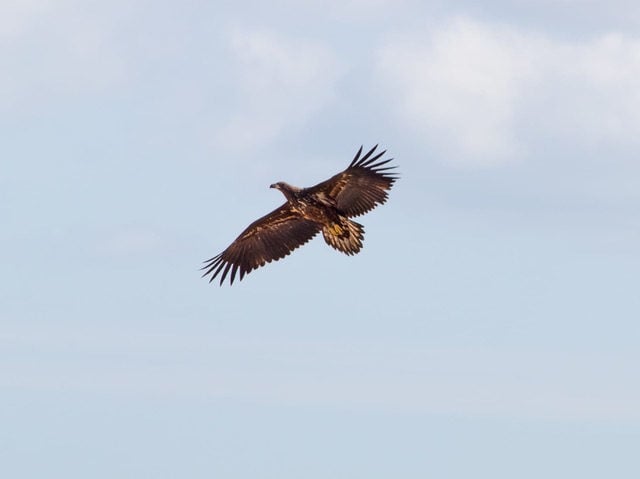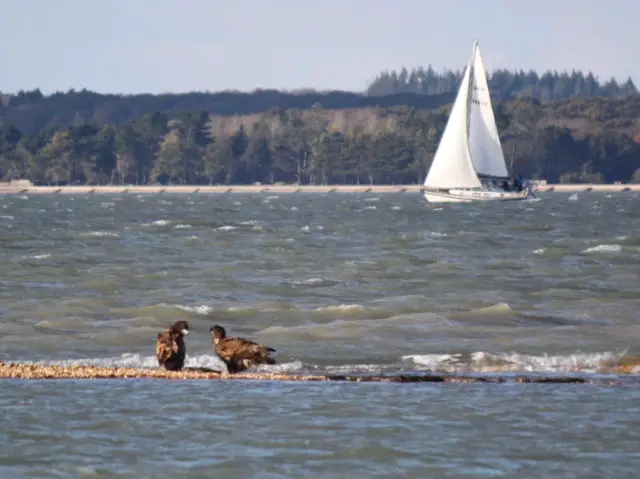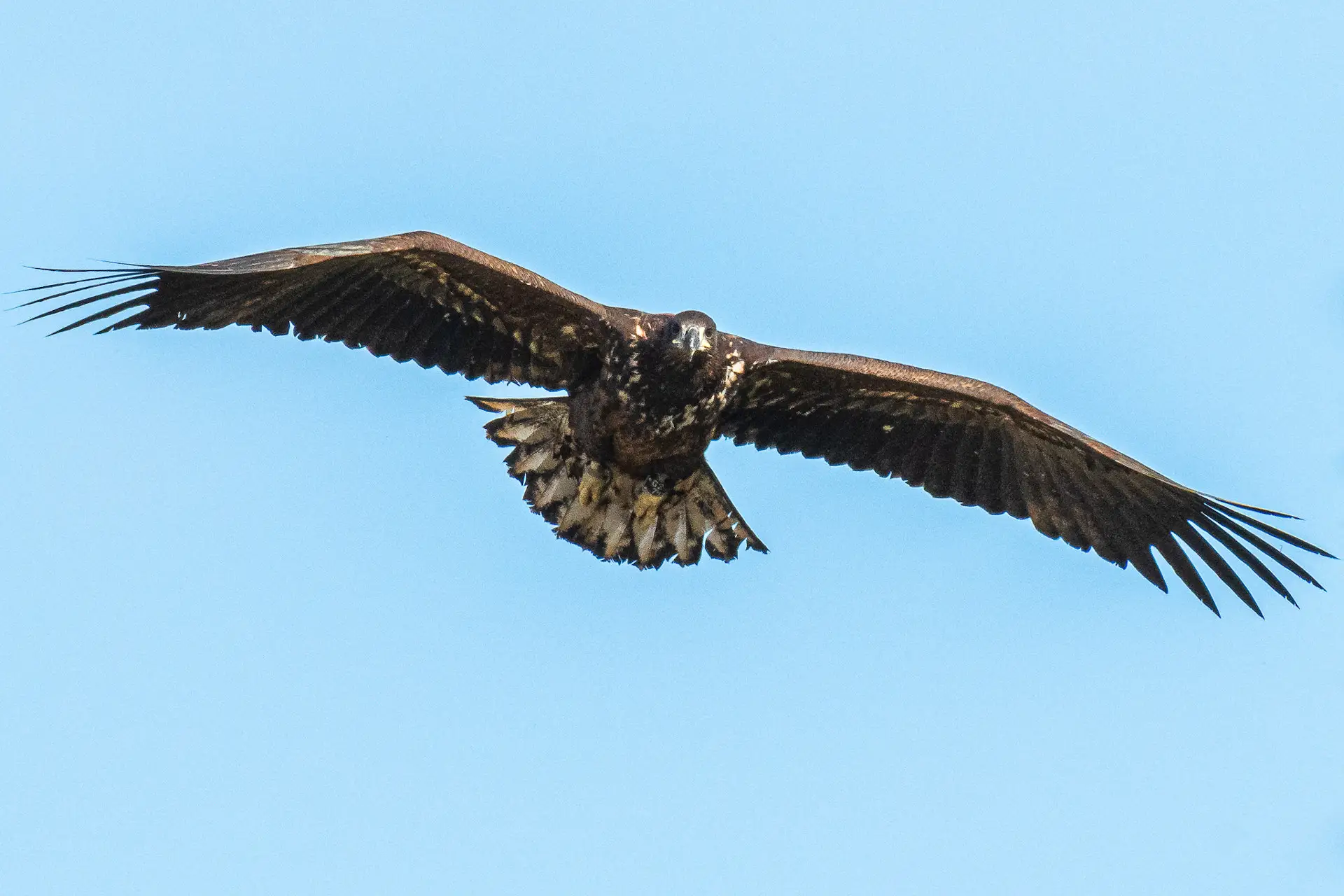After a really wet and windy autumn, winter is truly underway now. The days are short and we’ve had a number of heavy frosts – even here on the sunny Isle of Wight!
Despite the difficult weather conditions, the young white-tailed eagles are doing well; conserving energy on wet and miserable days, but making the most of the breaks in the weather to search for food.
Three of the six still here
Following the epic flights of a couple of the birds early after release, perhaps the most surprising fact is that in the past six weeks none of the eagles have moved particularly far.
Three birds remain on the Isle of Wight, and bird ‘G3 93’ is still in Oxfordshire.
Home-loving eagles
The satellite tracking data gives us a fascinating insight into the young eagles’ daily movements, and has shown that they are often extremely sedentary; perching quietly in wooded areas for much of the day and seldom flying more than a few kilometres from their roost site.

This is why white-tailed eagles are referred to as ‘sit-and-wait’ foragers. They would rather sit and watch for prey than make longer flights in search for food like golden eagles tend to do. This saves valuable energy, which is particularly important for young birds in their first winter.
Feeding on carrion
Our fieldwork indicates that the birds are finding plenty of carrion in the landscape, although one bird – G3 18 – is continuing to return to the release site on a daily basis to feed on the fish we’re still providing.
As the days lengthen in the New Year it will be interesting to see if the birds begin to wander further afield.
A perfect pair
Interestingly, two of the birds ‘G3 24’ and ’G2 74’ have spent much of the past four months together on the Isle of Wight. These two birds were not reared in the same pen, but found each other on the Isle of Wight whilst exploring after fledging.
Although the birds are reared in pens with at least one other, they have no contact with the other young eagles during this period. This means that when they meet each other after release, it replicates the natural process of young eagles from different nests encountering each other.
Best of friends
The tag data shows us that the two birds frequently roost in the same copses, and sometimes even in the same tree, and we have had a number of reports of them tumbling with each other mid-air.

The project team were also told that they had been seen soaring with paragliders over the west Wight, which must be the most extreme sighting we have had to date!
The satellite data indicates that the two birds also soared together over Newport early in December, but it seems that they went unnoticed on that occasion.
Young sweethearts?
Although white-tailed eagles do not breed until they are around 4-5 years old, it is sometimes possible for pair bonds to become established much earlier than that.
G3 24 is a female and G2 74 a male, and so there is a chance that if the two birds survive the next few years, they may eventually form a breeding pair.
Spotted a white-tailed eagle?
Share your sightings with Steve and the project team:
Head over to Steve’s Blog to find out more
- Instagram: @SeaEagleEngland
- Twitter: @SeaEagleEngland
Steve Egerton-Read, the White-Tailed Eagle Project Officer on the Isle of Wightfor Forestry England shares this latest update on the White-Tailed Eagles. Ed
Main image: © Ainsley Bennett





